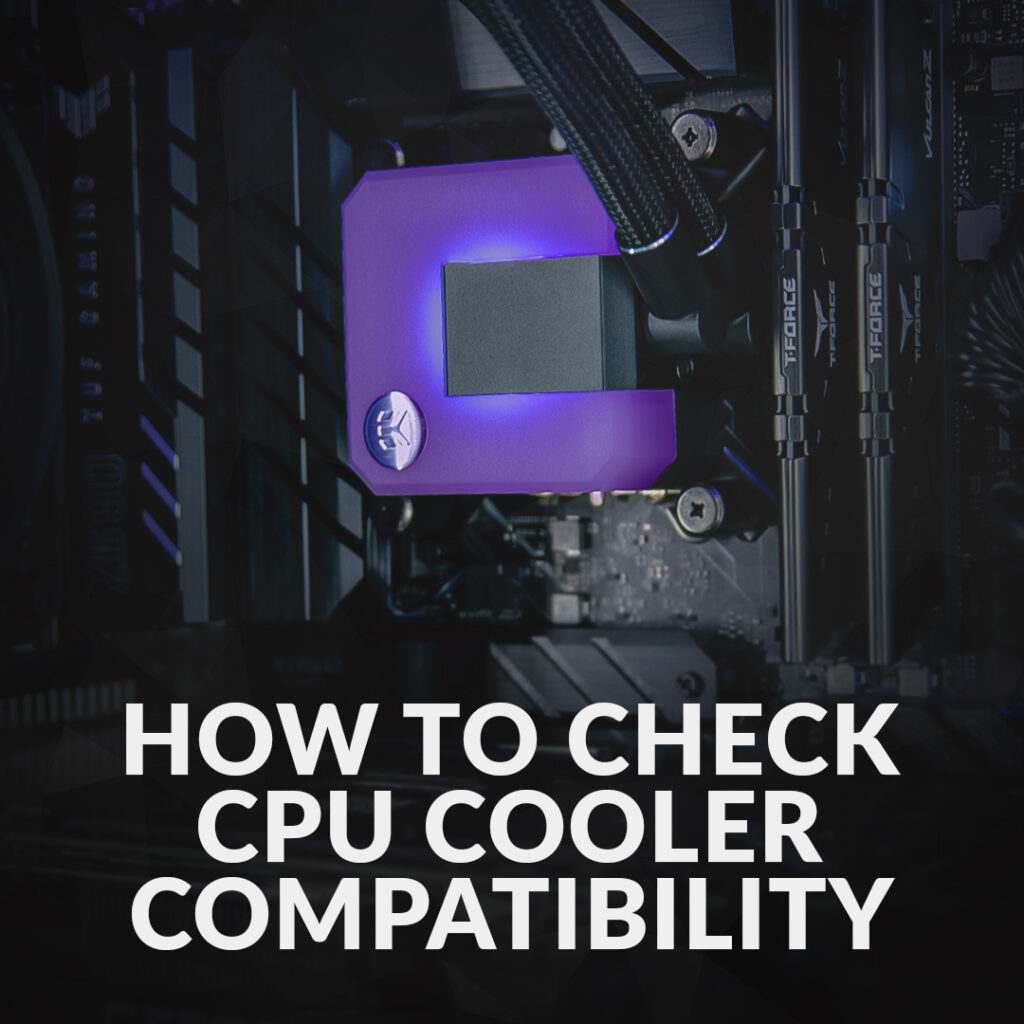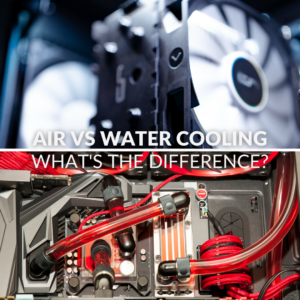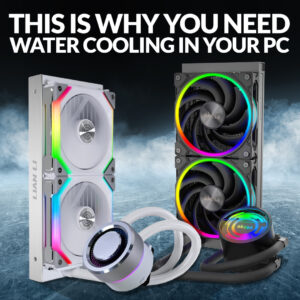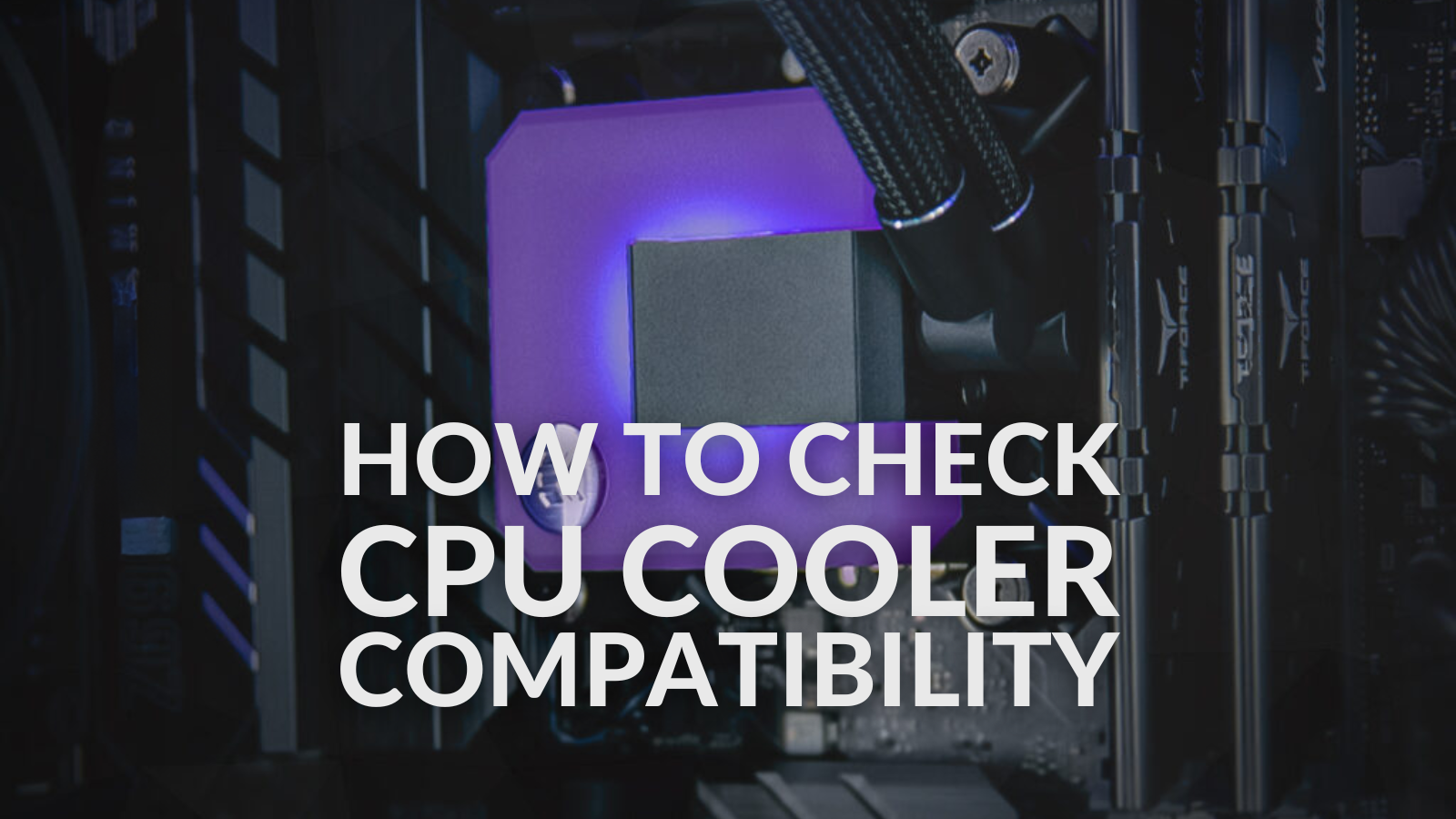A CPU cooler is an essential component of any computer system. An adequately efficient cooling solution for your processor is even more important in a gaming PC!

The vast majority of CPU coolers are usually compatible with both AMD and Intel processors. However, some may not be compatible with different generations of socket types. In this article, we will explain everything you need to know before buying a new air or liquid cooler.
How Do I Check if My CPU Cooler is Compatible With My CPU?
Step 1: Determine your CPU Socket Type
The socket type is a critical factor in determining CPU cooler compatibility.

This is the physical interface that connects the processor to the motherboard. To find out your CPU socket type, you can check the documentation that came with your processor or online. Alternatively, the table below has some recent CPU socket types.
| Processor | Socket |
|---|---|
| Intel 13th Gen | Socket LGA1700 |
| Intel 14th Gen | Socket LGA 1700 |
| Intel Core Ultra | Socket LGA 1851 |
| AMD Ryzen 7000 Series | Socket AM5 |
| AMD Ryzen 9000 Series | Socket AM5 |
Step 2: Check your CPU Cooler Socket Compatibility
Once you have identified the socket type of your CPU, you need to ensure that the CPU cooler you plan to purchase is compatible with your CPU socket. CPU coolers are designed to fit specific socket types, so checking the product specifications before making a purchase is essential. Air coolers and Liquid Coolers available at Overclockers UK list their compatibility to make finding your next cooler simple.

Air vs Water Cooling – What’s the Difference?
Step 3: Check the CPU Cooler TDP Rating
Thermal Design Power (TDP) is the maximum amount of heat that a CPU cooler is designed to dissipate. TDP is measured in watts and is an essential factor to consider when selecting a CPU cooler. If the TDP rating of the CPU cooler is lower than the TDP rating of the CPU, the CPU may overheat, which can cause performance issues or damage to the CPU. Therefore, it is crucial to ensure that the TDP rating of the CPU cooler is equal to or higher than the TDP rating of the CPU.
Step 4: Check the CPU Cooler Clearance
The clearance of a CPU cooler refers to the amount of space required around the CPU socket to accommodate the CPU cooler. CPU coolers come in various sizes and shapes, so some may be too large or have an unusual shape, making them incompatible with your computer case or motherboard. It is imperative to check the clearance of the CPU cooler and compare it with the dimensions of your computer case and motherboard to ensure compatibility.
This Is Why You Need Water Cooling In Your PC

TLDR
In summary, when checking CPU cooler compatibility, you need to consider the socket type of your CPU, the CPU cooler socket compatibility, the TDP rating of the CPU cooler, and the CPU cooler clearance. By following these steps, you can ensure that the CPU cooler you purchase is compatible with your PC and will help regulate the temperature of your CPU, improving its performance and lifespan.
Ready to Get Cool?
Now you know everything you need to choose your new CPU cooler, make sure to check out our range of Air coolers and Liquid Coolers by clicking the relevant buttons below.
Be sure to let us know what you use in the comments.
